Separation Anxiety in Toddlers: A Comprehensive Guide for Parents and Caregivers
Separation anxiety is a normal stage of development for young children, particularly toddlers. It is characterized by feelings of unease and distress when a child is separated from their primary caregivers. This phase is a part of the child’s growing understanding of their own independence and the realization that they are separate entities from their parents or caregivers.
In this article, we will explore the nuances of separation anxiety in toddlers, focusing on the ages of 2, 3, and 4 years old, and delve into what it looks like at night.
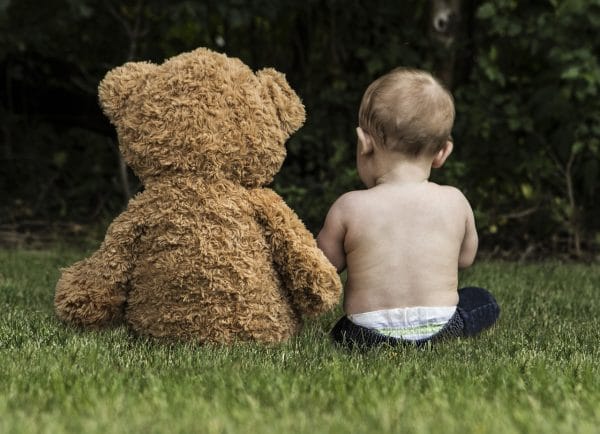
What is Separation Anxiety in Toddlers?
![]()
Separation anxiety in toddlers is a developmental phenomenon where children experience fear or distress when parting from their parents or main caregivers. It often presents itself through crying, clinging, and tantrums when a parent leaves for work or when the child is dropped off at daycare or preschool. It’s important to understand that separation anxiety is a normal part of a child’s emotional growth and signifies their attachment and love for their parents.
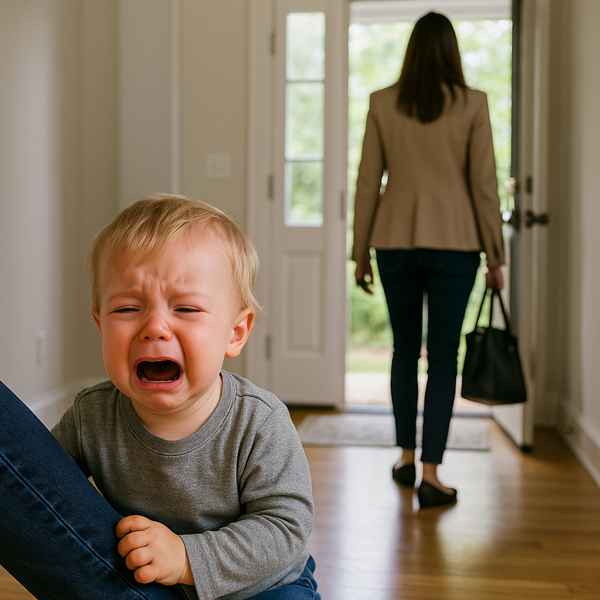
Separation Anxiety Disorder
Separation Anxiety Disorder is a mental health problem where a person, often a child, experiences intense fear or distress about being apart from someone they are emotionally attached to, like a parent or caregiver. This anxiety goes beyond normal levels of worry and can cause significant distress, affecting daily activities and routines. For example, a child with this disorder might have trouble going to school or staying at a friend’s house because they’re afraid something bad will happen to their loved one while they’re apart. It’s important to understand that this isn’t just typical nervousness; it’s a more severe and persistent worry that can benefit from professional support and intervention.
Kids with This Disorder Fear Being Apart from Their Family Members
Children with this disorder experience intense anxiety and fear when they are separated from their family members. It goes beyond the typical worries that many kids have and can significantly impact their daily lives. These children might become very upset at the thought of being away from their parents or other family members, and they may refuse to go to school, sleepovers, or other activities because of this fear. They might also experience physical symptoms like stomachaches or headaches when they know a separation is coming. It’s important for these kids to receive support and understanding from their families and, if needed, professional help to manage their anxiety.
Treatment of Separation Anxiety Disorder
Treating this disorder typically involves a combination of approaches to help the person feel more comfortable and secure when separated. One common method is cognitive-behavioral therapy (CBT), which helps individuals learn to challenge and change their anxious thoughts and gradually face situations that cause anxiety. Therapists may also work with families to develop strategies for easing transitions and separations. In some cases, medication might be prescribed to help manage the anxiety by your healthcare provider. Additionally, creating a consistent routine and providing reassurance can help the person feel more at ease during separations. Overall, treatment aims to reduce anxiety and improve the individual’s ability to function independently.
How to Prevent Separation Anxiety
Separation anxiety can be challenging, but there are ways to help prevent it. Start by gradually getting your pet or child used to being alone. You can do this by leaving them for short periods and slowly increasing the time apart. Create a comfortable and safe environment for them with toys or activities to keep them busy. Establishing a consistent routine can also provide a sense of security. Positive reinforcement, like giving a treat or praise when they handle being alone well, can encourage them. For pets, practice leaving and returning home without making a big fuss to show that coming and going is normal. For children, reassure them with a calm and confident attitude that you will return. It’s important to be patient and consistent to help ease their anxiety over time.
Intense or Prolonged Separation Anxiety: Panic Attacks
Intense or prolonged separation anxiety occurs when someone experiences overwhelming worry or fear about being apart from a person, place, or pet they are deeply attached to. This anxiety can become so severe that it triggers panic attacks, which are sudden episodes of intense fear or discomfort. During a panic attack, a person might feel symptoms like a racing heart, shortness of breath, dizziness, or an overwhelming sense of dread. These feelings can be incredibly distressing and may make it difficult for the person to function normally in their daily life. It can be particularly challenging when the anxiety persists over a long period, as it can affect their overall well-being and relationships.
Separation Anxiety in Toddlers Age 2
![]()
At the age of 2, toddlers are beginning to test their independence but are still heavily reliant on their parents or caregivers for comfort and security. Separation anxiety can be particularly intense at this age as they start to understand that their parents can leave them, yet they lack the concept of time to understand when they’ll return. This age group might show anxiety by:
- Developing strong attachment to one parent
- Displaying fear of strangers or unfamiliar places
- Throwing tantrums when faced with separation
- Exhibiting sleep disturbances, like difficulty falling asleep
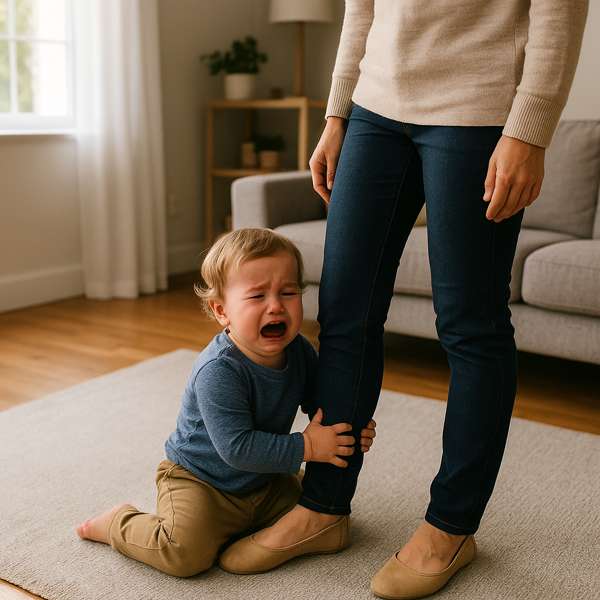
Separation Anxiety in Toddlers Age 3
![]()
By age 3, children have a slightly better grasp of time and may understand that a parent will come back, but this doesn’t necessarily alleviate the anxiety. They might still feel overwhelmed by the parent’s absence and could show it by:
- Expressing verbal anxiety about being left alone
- Protesting when faced with a new caregiver or environment
- Resisting bedtime and experiencing nightmares
- Having difficulty saying goodbye
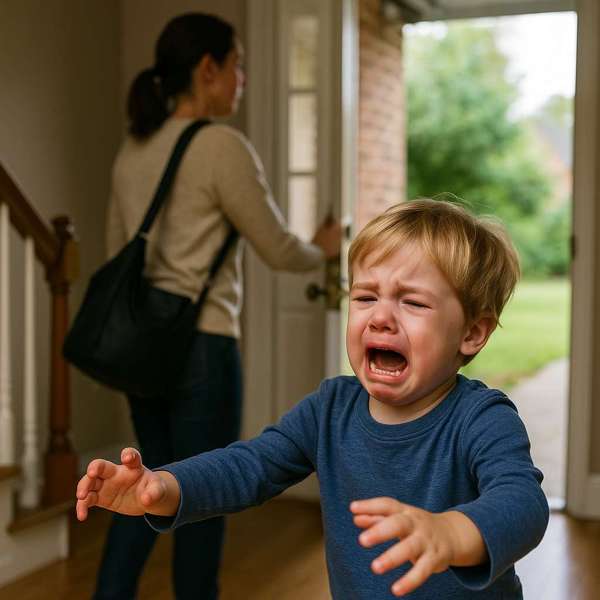
Separation Anxiety in Toddlers Age 4
![]()
By the age of 4, many toddlers begin to outgrow separation anxiety as their cognitive skills improve, and they start to understand that separations are temporary. However, some may still struggle, especially during transitions or stressful times. Signs in this age group may include:
- Becoming quiet or withdrawn when a separation is imminent
- Exhibiting regressive behaviors, such as bedwetting or thumb-sucking
- Seeking extra reassurance from caregivers
- Feeling ill or complaining of stomach aches to avoid separation
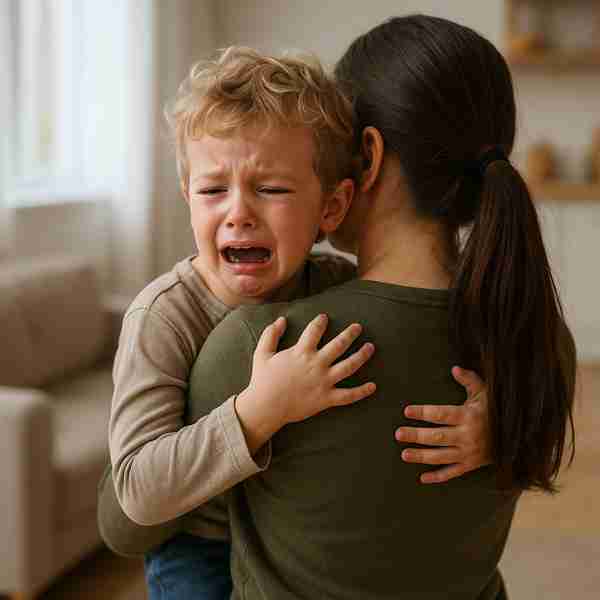
Separation Anxiety in Toddlers at Night
![]()
Separation anxiety can also manifest itself at night, leading to challenges with bedtime routines and sleep. Toddlers might:
- Procrastinate on bedtime rituals to avoid being alone
- Experience night wakings and have trouble returning to sleep without a parent
- Insist on a parent staying with them until they fall asleep
- Have bad dreams or night terrors related to separation themes
Nighttime anxiety can be particularly taxing for both the child and the parents, as it disrupts the household’s sleep and can create a cycle of dependence and exhaustion.
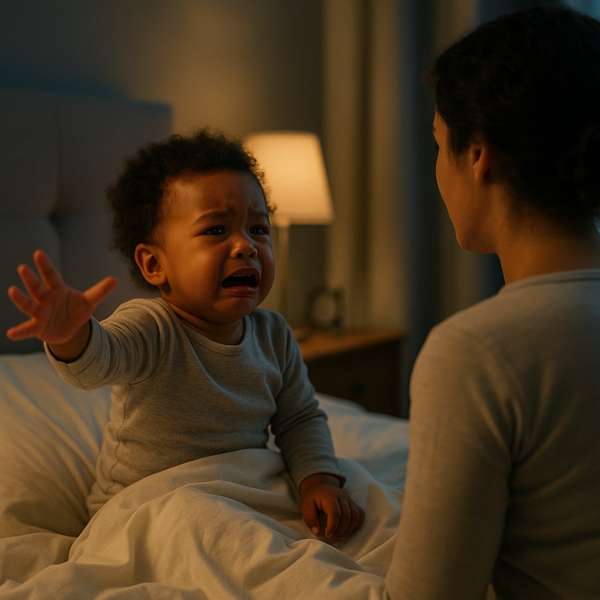
Managing Separation Anxiety: Strategies and Tips
![]()
While separation anxiety is a normal stage, there are strategies that parents and caregivers can use to ease the distress and help their children cope better. Here are some tips:
- Practice Short Separations: Start with brief periods of separation and gradually increase the time apart. This helps build your child’s confidence in their ability to be without you.
- Develop a Goodbye Ritual: A consistent and positive goodbye routine can provide comfort and predictability. A hug, a wave, or a special phrase can signal to your child that you will return.
- Keep Calm and Reassure: Your child can pick up on your emotions, so try to remain calm and composed during separations. Offer reassurance that you’ll come back and that they’re safe with the caregiver.
- Communicate with Caregivers: Ensure that your child’s caregivers are aware of their separation anxiety and are prepared to provide extra comfort and distraction.
- Establish a Comfort Object: A transitional object like a blanket or a favorite toy can offer your child a sense of security when you’re not there.
- Be Consistent: Consistency in your actions and in following through with your promises helps your child learn to trust the process of separation and reunion.
How to Help Separation Anxiety in Babies
To help ease this anxiety, it’s important to create a predictable routine so the baby knows what to expect. Gradually practicing short separations can also help them adjust. Playing peek-a-boo or hide-and-seek can make the concept of coming and going less scary and more fun. Always say goodbye with a reassuring tone and a smile, so they know you’ll return. Providing a comfort object like a favorite toy or blanket can also give them a sense of security when you’re not there.
How to Deal With Separation Anxiety in Babies at Night
Dealing with separation anxiety in babies at night can be challenging, but there are a few strategies that might help. Start by establishing a calming bedtime routine to create a sense of security and predictability, such as giving your baby a warm bath, reading a story, or singing a lullaby. Try to put your baby to bed while they are drowsy but still awake so they can learn to fall asleep on their own. You might also consider using a comfort object, like a favorite blanket or stuffed animal, to help soothe them. If your baby wakes up and becomes upset during the night, try to comfort them with a gentle voice or pat, but avoid picking them up immediately so they can gradually learn to self-soothe. Be patient and consistent, as it may take time for your baby to adjust and feel more comfortable sleeping without you nearby.
When to Seek Help
![]()
If your child’s separation anxiety seems excessive or is not improving with age, it may be time to seek help from a pediatrician or a child psychologist. Signs that professional help might be needed include:
- Intense fear or panic during separations
- Physical symptoms such as vomiting or severe headaches
- Anxiety that affects school or social activities
- Behavioral issues that are not typical for the child’s age
A professional can assess if there is an underlying anxiety disorder and can provide guidance on the best course of action for your child and family.
Conclusion
![]()
Separation anxiety in toddlers is a common and natural part of growing up. Understanding the signs and symptoms at different ages can help parents and caregivers address this anxiety more effectively. By implementing supportive strategies, maintaining patience, and seeking help when necessary, parents can aid their children in overcoming separation anxiety. The key is to provide a secure base from which your child can explore the world, knowing they have a safe place to return and a loving parent or caregiver waiting for them.
In summary, separation anxiety is a phase that most children will experience, but with the right approach, it can be managed. By recognizing the signs at ages 2, 3, and 4, and by understanding how it can affect toddlers at night, families can navigate this developmental stage with confidence and compassion, ensuring a smoother transition into more independent stages of childhood.


